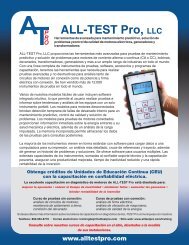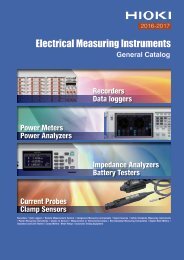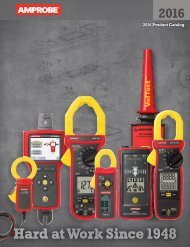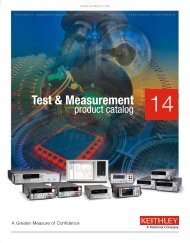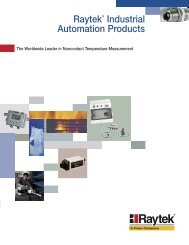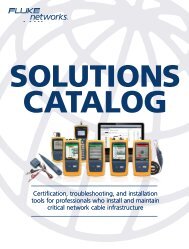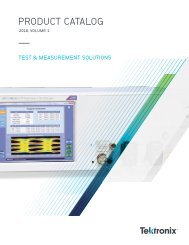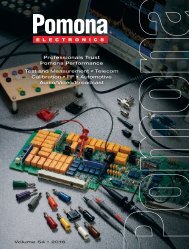Catalogo Fluke Calibration 2016
CEDE instrumentos de medición, distribuidor autorizado Fluke Calibration para todo México. Catalogo de instrumentos de calibración 2016.
CEDE instrumentos de medición, distribuidor autorizado Fluke Calibration para todo México. Catalogo de instrumentos de calibración 2016.
Create successful ePaper yourself
Turn your PDF publications into a flip-book with our unique Google optimized e-Paper software.
RF calibration<br />
RF and microwave calibration refers to the process<br />
of verifying the performance of, or adjusting/<br />
deriving corrections for, any instrument or<br />
component that will be used in the measurement<br />
or testing of RF and microwave parameters.<br />
This discipline is usually referred to as RF and<br />
microwave metrology. Principal parameters include<br />
RF voltage, RF power, impedance, modulation,<br />
distortion, time, frequency and phase. High<br />
dynamic range ratiometric comparisons are<br />
often performed and results are expressed in the<br />
logarithmic dB form.<br />
As with any other calibration, RF and microwave<br />
calibration compares a device or unit under test<br />
(DUT or UUT) to a traceably calibrated standard or<br />
reference device. The process typically involves<br />
comparing a measuring UUT to a reference source;<br />
a sourcing UUT with a measuring reference; or<br />
quite commonly a measuring UUT with a measuring<br />
reference, using a stable but unknown source.<br />
In each case, the uncertainty or stability of the<br />
reference should significantly exceed the specified<br />
performance of the device or unit under test.<br />
RF metrologists typically look for performance<br />
margins of 4:1, however, test uncertainty ratios<br />
lower than this usual target are more frequently<br />
encountered in RF than in other calibration<br />
disciplines. Conversion from logarithmic (dB)<br />
to linear units is recommended practice when<br />
combining uncertainty contributions and<br />
considering test uncertainty ratios.<br />
Precision devices that are commonly used in RF<br />
and microwave calibration fall broadly into four<br />
categories:<br />
Sourcing instruments. Reference signals and/<br />
or modulation sources, frequency references,<br />
pulse or arbitrary waveform generators, reference<br />
attenuators.<br />
Measuring instruments. Power sensors, spectrum<br />
analyzers, measuring receivers, oscilloscopes, RF<br />
voltmeters, frequency counters.<br />
Source-measure instruments. Vector or scalar<br />
network analyzers.<br />
Precision components<br />
• Power splitters, power dividers or couplers,<br />
attenuating pads<br />
• Inter-series, polarity or sacrificial cables and<br />
adapters<br />
• Short, open, load or sliding terminators<br />
• Reflection bridges or directional couplers<br />
www.flukecal.com RF <strong>Calibration</strong> 9




